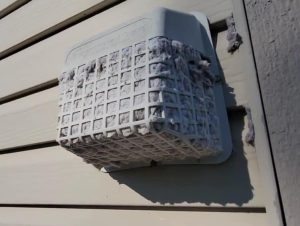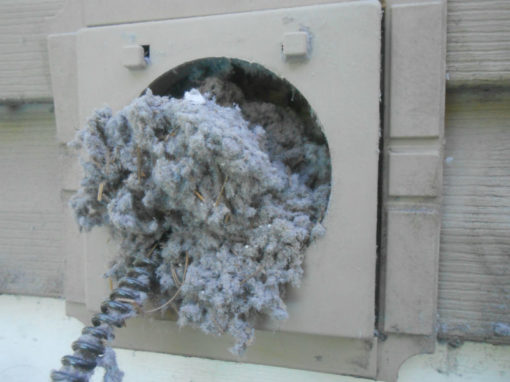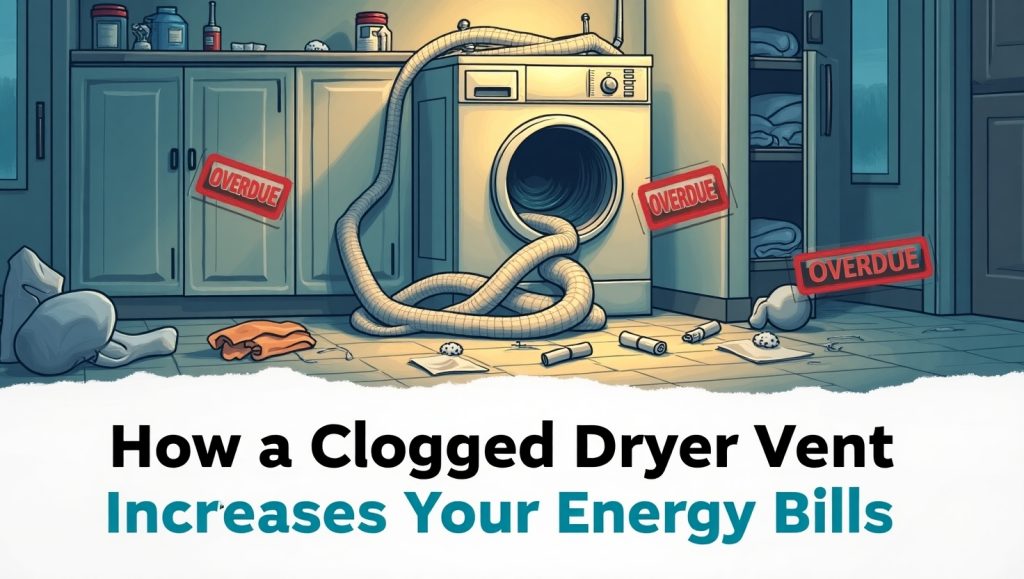Many homeowners don’t realize that a clogged dryer vent is not just a safety hazard—it also significantly impacts energy efficiency and increases utility costs. When lint and debris accumulate in the vent, airflow is restricted, forcing your dryer to work harder and longer than necessary. This inefficiency leads to increased energy consumption, higher bills, and even premature wear and tear on your appliance. In this article, we’ll explore how a clogged dryer vent affects your energy bills and why regular maintenance is essential for cost savings and safety.

How a Clogged Dryer Vent Affects Energy Consumption
1. Increased Drying Time
One of the first signs of a clogged dryer vent is that your clothes take longer to dry. Normally, a dryer should complete a load in about 30-45 minutes. However, if your vent is clogged, the hot air and moisture cannot escape properly, leaving your clothes damp even after a full cycle. As a result, you may find yourself running multiple cycles just to achieve dry laundry, which drastically increases energy usage and your electricity bill.
2. Overworking the Dryer
When airflow is restricted, your dryer’s heating element and motor must work harder to compensate. This increased workload leads to excessive energy consumption, which is directly reflected in your monthly utility costs. Over time, the constant strain on the appliance can also shorten its lifespan, leading to costly repairs or premature replacement.
3. Higher Electricity Bills
A dryer is one of the most energy-intensive appliances in a home. When the vent is clogged, the dryer runs inefficiently, drawing more power than necessary. According to the U.S. Department of Energy, dryers consume about 5% of the average household’s electricity usage. A clogged vent can cause a significant spike in that percentage, adding unnecessary costs to your monthly bills.
The Hidden Costs of a Clogged Dryer Vent
Aside from the immediate increase in energy bills, a clogged dryer vent can lead to other unexpected expenses:
- Appliance Repairs: The overworked motor and heating element are more prone to breakdowns, requiring costly repairs.
- Shortened Dryer Lifespan: An inefficient dryer experiences more wear and tear, leading to premature failure and the need for a new appliance sooner than expected.
- Fire Hazards: Lint is highly flammable, and a clogged vent increases the risk of a house fire, potentially leading to expensive damage and insurance claims.
How to Prevent a Clogged Dryer Vent and Save on Energy Bills
1. Clean the Lint Trap After Every Load
The first line of defense against a clogged dryer vent is cleaning the lint trap after every drying cycle. This simple step helps prevent excessive lint buildup in the vent system.
2. Inspect and Clean the Vent Regularly
Experts recommend cleaning your dryer vent at least once a year to ensure proper airflow. If you notice excessive lint buildup around your dryer or experience longer drying times, you may need to clean it more frequently.

3. Use a Professional Dryer Vent Cleaning Service
While DIY cleaning can help, professional vent cleaning ensures a thorough removal of lint and debris, improving efficiency and safety. Professionals use specialized tools to clean hard-to-reach areas, ensuring optimal airflow.
4. Ensure Proper Vent Installation
If your dryer vent has excessive bends, long duct runs, or improper materials, it can contribute to lint buildup and airflow restriction. A professional inspection can identify any installation issues that may be affecting efficiency.
Final Thoughts
A clogged dryer vent not only poses a fire hazard but also leads to significant energy waste and higher utility bills. By keeping your dryer vent clean and well-maintained, you can improve energy efficiency, extend the lifespan of your appliance, and lower your monthly expenses. If you’ve noticed signs of a clogged vent, don’t wait—schedule a professional cleaning today to keep your home safe and your energy bills in check.

